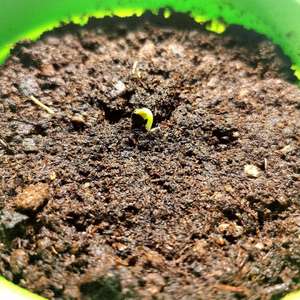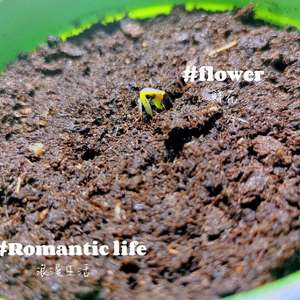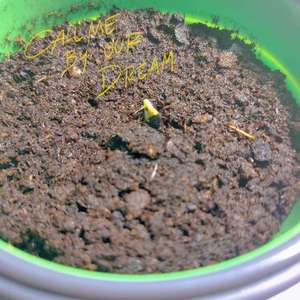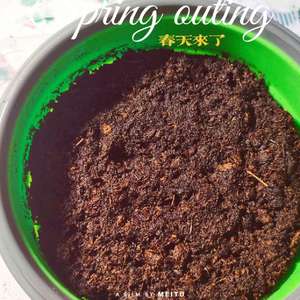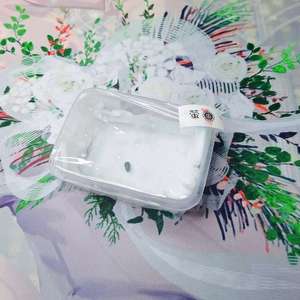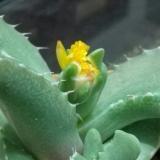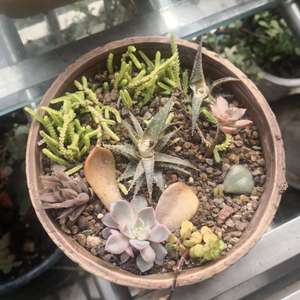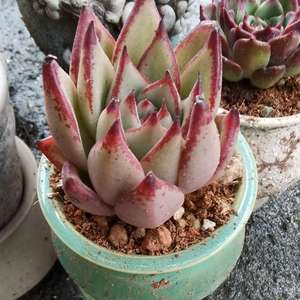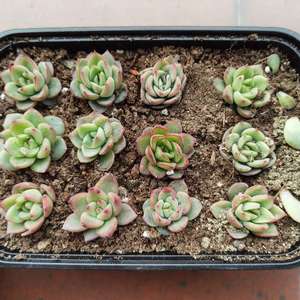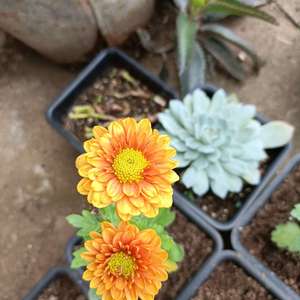文章
Miss Chen
2022年02月28日

Catnip (Nepeta cataria) is a herbaceous perennial that thrives in much of North America and is very easy to grow. It has a clump-forming growth habit with square stems and triangular to oval, gray-green leaves with toothed edges that stretch around 3 inches long. Flower spikes appear in the late spring to early fall, bearing clusters of small blooms that are white with light purple markings.
This plant is a fast grower and can quickly spread throughout the landscape if not kept in check. It will reach its mature size in a single season and should be planted in the spring. Note that, while many cats enjoy catnip, the oils of the plant are technically toxic to them.1
Common Name Catnip, catmint
Botanical Name Nepeta cataria
Family Lamiaceae
Plant Type Perennial, herb
Size 2–3 ft. tall and wide
Sun Exposure Full sun
Soil Type Loamy, sandy, well-drained
Soil pH Acidic, neutral, alkaline (6.1 to 7.8)
Bloom Time Spring, summer, fall
Hardiness Zones 3–7 (USDA)
Native Area Europe, Asia
Toxicity Oil is toxic to cats
How to Plant Catnip
When to Plant
Plant catnip in the spring after the threat of frost has passed in your area. Start catnip seeds indoors around six weeks prior to your projected last frost date.
Selecting a Planting Site
The ideal garden location for catnip will get lots of sunlight and have well-drained soil. Make sure no taller plants nearby are creating too much shade for the catnip throughout the day. However, if you live in a hot climate, catnip will appreciate some afternoon shade. Catnip also grows well in containers. In fact, a planting site with some kind of boundary, such as a pot, raised garden bed, or stone wall, will help to contain catnip's spread.
Spacing, Depth, and Support
Space catnip plants 18 to 24 inches apart in the garden. Position nursery plants and seedlings at the same depth they were in their previous container. Lightly cover seeds with soil. A support structure is typically not necessary for catnip.
Catnip Plant Care
Light
Catnip prefers full sun, meaning at least six hours of direct sunlight on most days. Too little light can cause leggy growth with sparse foliage. However, catnip does struggle in extreme heat. So if you live in a hot climate, give your catnip a little shade from the strong afternoon sun.
Soil
These plants aren’t fussy about their soil as long as they have good drainage. They can tolerate poor, rocky, and dry soils. A well-draining sandy or loamy soil is best with a slightly acidic to slightly alkaline soil pH.
Water
Catnip is a very drought-tolerant plant, and sitting in waterlogged soil can kill it. Keep the soil of seedlings lightly moist but not soggy. Mature plants likely won’t need watering unless you have a prolonged period of drought. If the foliage is wilting, give your catnip a deep watering.
Temperature and Humidity
Catnip prefers temperatures between 55 and 85 degrees. The plant tends to struggle in hot, humid climates. Especially in high humidity, make sure there is good air circulation around the plant to help prevent fungal growth.

Fertilizer
Mix some compost into the soil at the time of planting to give your catnip a boost. After that, catnip typically won’t need additional feeding. But if you have very poor soil, you can use an all-purpose liquid plant food or a layer of compost each spring.
Pollination
Catnip is a self-pollinating plant. It will attract bees and other pollinators to the garden.
Types of Catnip
Besides Nepeta cataria, there are several plants that go by the name catnip, including:
Nepeta citriodora: Known as lemon catnip, this plant grows slightly smaller than Nepeta cataria and has a lemony fragrance.
Nepeta camphorata: Commonly referred to as camphor catnip, this plant remains under 2 feet tall and wide.
Nepeta parnassica: Known as Greek catnip, this plant also remains smaller than 2 feet tall and wide and bears light pink flowers.
Catnip vs. Catmint
The catnip plant Nepeta cataria is commonly confused with the catmint plant Nepeta mussinii. Both plants have gray-green foliage on square stems. However, catmint has a longer blooming period. And its flowers are purple while catnip’s are primarily white. Moreover, catnip is the plant that attracts cats while catmint does not. Catmint also generally has a nicer form, making it better for landscaping purposes.
Harvesting Catnip
Harvest catnip when it’s in bloom. Late morning is good time to harvest after the dew has dried but before the day heats up and potentially causes the plant to wilt. Cut off entire stems or even the whole plant if you wish. Catnip is used dried in sachets, teas, cat toys, and more. Hang the stems upside-down for drying in a dark, dry, well-ventilated space as soon as possible after harvesting. Once they’ve dried out, which usually takes two to three weeks, the leaves and flowers can be crumbled for use.
How to Grow Catnip in Pots
Growing catnip in a pot is a good option because it will prevent the plant from spreading into unwanted places. Use a container that’s at least 12 inches in diameter, and make sure it has a drainage hole. An unglazed clay container is ideal because it will allow excess soil moisture to escape through its walls. Use a well-draining potting mix, and plant your catnip at the same depth it was in its previous container.
Pruning
Pruning catnip is primarily to limit its spread and tidy up its growth. To minimize its spread, prune off the flowers as they’re starting to degrade and before they go to seed. This also can encourage further blooming. Also, cut down new sprouts from underground runners as they appear if you don’t want the plant to spread. Furthermore, pinch back the stems on young plants to encourage bushier growth. And after the first frost in the fall, cut back mature plants to just a few inches from the soil. They will regenerate in the spring with fresh growth.
Propagating Catnip
Catnip will readily spread on its own. But it’s also easy to propagate the plant via cuttings. Not only is this an inexpensive way to get a new plant, but cutting back the stems can also promote bushier growth on the parent plant. The best time to take cuttings is in the spring or early summer. Here’s how:
Cut off a 4- to 6-inch piece of stem at a 45-degree angle just below a leaf node.
Remove the leaves on the lower half of the cutting.
Place the cutting either in a small container of water or moist soilless potting mix. A healthy root system will typically form in either scenario. Put the container in a warm spot with bright, indirect light.
Change the container water each day, or continue to keep the potting mix moist.
Roots should appear within a week. Once the plant has produced new foliage growth, it’s ready to be transplanted.
Mature catnip also can be propagated via division. This is a great way to reinvigorate an overgrown plant. Here’s how:
Dig up the plant, aiming to keep its roots as intact as possible.
Use shears or a sharp spade to divide the clump in half.
Replant the separate clumps at the same depth they were previously growing.
How to Grow Catnip From Seed
Start seeds indoors about six weeks prior to your projected last frost date in the spring. First, place them in a freezer overnight, and then soak them in water for 24 hours. This stratification process can encourage germination. Then, plant the seeds about 1/8 inch deep in a tray filled with moistened seed-starting mix. Place the tray in a warm, bright spot. Continue to keep the soil moist, and germination should occur within two weeks. Plant the seedlings outside after frost is out of the forecast.
Potting and Repotting Catnip
Potted catnip plants will generally need more water and food than those grown in the ground. However, make sure the container does not become waterlogged. Plan to repot your catnip when you see roots growing out of the drainage holes and popping up above the soil line. Choose one container size up, and replant with fresh potting mix. Even if your plant doesn’t need a larger container, it’s ideal to refresh it with new potting mix every couple of years.
Overwintering
Catnip typically does fine over the winter within its growing zones. Cut back any tender new growth in the fall, so cold weather doesn’t damage it and weaken the plant. And be sure to stop fertilizing in the fall to avoid promoting new growth. Don’t water the plant over winter. Wet soil in the wintertime can be fatal.
Common Pests and Plant Diseases
Catnip isn’t prone to many pest or disease issues. If the plant sits in waterlogged soil for too long, it can succumb to rot. Another concern is the plant attracting cats, who will try to rub and roll on the foliage and potentially damage the stems. Placing some garden fencing or stakes around the plant can help to prevent this, as can growing the catnip in a container.
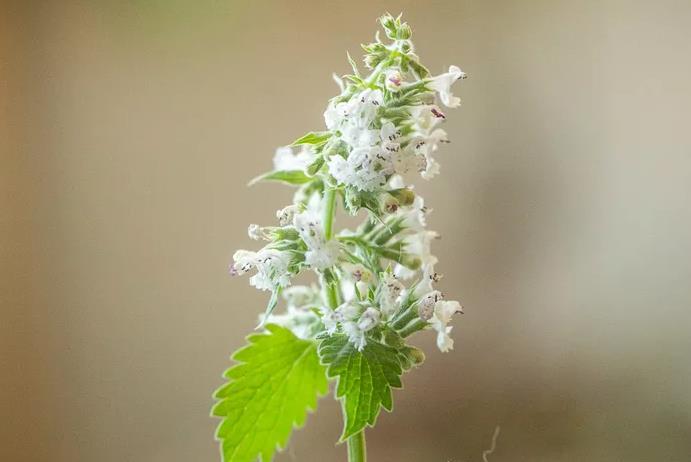
FAQ
Is catnip easy to grow?
Catnip plants are quite easy to grow and can tolerate many different growing conditions.
How long does it take to grow catnip?
Catnip is a fast grower and will reach its mature size within one growing season.
Does catnip come back every year?
Catnip is a perennial plant and will come back in the garden each year.
This plant is a fast grower and can quickly spread throughout the landscape if not kept in check. It will reach its mature size in a single season and should be planted in the spring. Note that, while many cats enjoy catnip, the oils of the plant are technically toxic to them.1
Common Name Catnip, catmint
Botanical Name Nepeta cataria
Family Lamiaceae
Plant Type Perennial, herb
Size 2–3 ft. tall and wide
Sun Exposure Full sun
Soil Type Loamy, sandy, well-drained
Soil pH Acidic, neutral, alkaline (6.1 to 7.8)
Bloom Time Spring, summer, fall
Hardiness Zones 3–7 (USDA)
Native Area Europe, Asia
Toxicity Oil is toxic to cats
How to Plant Catnip
When to Plant
Plant catnip in the spring after the threat of frost has passed in your area. Start catnip seeds indoors around six weeks prior to your projected last frost date.
Selecting a Planting Site
The ideal garden location for catnip will get lots of sunlight and have well-drained soil. Make sure no taller plants nearby are creating too much shade for the catnip throughout the day. However, if you live in a hot climate, catnip will appreciate some afternoon shade. Catnip also grows well in containers. In fact, a planting site with some kind of boundary, such as a pot, raised garden bed, or stone wall, will help to contain catnip's spread.
Spacing, Depth, and Support
Space catnip plants 18 to 24 inches apart in the garden. Position nursery plants and seedlings at the same depth they were in their previous container. Lightly cover seeds with soil. A support structure is typically not necessary for catnip.
Catnip Plant Care
Light
Catnip prefers full sun, meaning at least six hours of direct sunlight on most days. Too little light can cause leggy growth with sparse foliage. However, catnip does struggle in extreme heat. So if you live in a hot climate, give your catnip a little shade from the strong afternoon sun.
Soil
These plants aren’t fussy about their soil as long as they have good drainage. They can tolerate poor, rocky, and dry soils. A well-draining sandy or loamy soil is best with a slightly acidic to slightly alkaline soil pH.
Water
Catnip is a very drought-tolerant plant, and sitting in waterlogged soil can kill it. Keep the soil of seedlings lightly moist but not soggy. Mature plants likely won’t need watering unless you have a prolonged period of drought. If the foliage is wilting, give your catnip a deep watering.
Temperature and Humidity
Catnip prefers temperatures between 55 and 85 degrees. The plant tends to struggle in hot, humid climates. Especially in high humidity, make sure there is good air circulation around the plant to help prevent fungal growth.

Fertilizer
Mix some compost into the soil at the time of planting to give your catnip a boost. After that, catnip typically won’t need additional feeding. But if you have very poor soil, you can use an all-purpose liquid plant food or a layer of compost each spring.
Pollination
Catnip is a self-pollinating plant. It will attract bees and other pollinators to the garden.
Types of Catnip
Besides Nepeta cataria, there are several plants that go by the name catnip, including:
Nepeta citriodora: Known as lemon catnip, this plant grows slightly smaller than Nepeta cataria and has a lemony fragrance.
Nepeta camphorata: Commonly referred to as camphor catnip, this plant remains under 2 feet tall and wide.
Nepeta parnassica: Known as Greek catnip, this plant also remains smaller than 2 feet tall and wide and bears light pink flowers.
Catnip vs. Catmint
The catnip plant Nepeta cataria is commonly confused with the catmint plant Nepeta mussinii. Both plants have gray-green foliage on square stems. However, catmint has a longer blooming period. And its flowers are purple while catnip’s are primarily white. Moreover, catnip is the plant that attracts cats while catmint does not. Catmint also generally has a nicer form, making it better for landscaping purposes.
Harvesting Catnip
Harvest catnip when it’s in bloom. Late morning is good time to harvest after the dew has dried but before the day heats up and potentially causes the plant to wilt. Cut off entire stems or even the whole plant if you wish. Catnip is used dried in sachets, teas, cat toys, and more. Hang the stems upside-down for drying in a dark, dry, well-ventilated space as soon as possible after harvesting. Once they’ve dried out, which usually takes two to three weeks, the leaves and flowers can be crumbled for use.
How to Grow Catnip in Pots
Growing catnip in a pot is a good option because it will prevent the plant from spreading into unwanted places. Use a container that’s at least 12 inches in diameter, and make sure it has a drainage hole. An unglazed clay container is ideal because it will allow excess soil moisture to escape through its walls. Use a well-draining potting mix, and plant your catnip at the same depth it was in its previous container.
Pruning
Pruning catnip is primarily to limit its spread and tidy up its growth. To minimize its spread, prune off the flowers as they’re starting to degrade and before they go to seed. This also can encourage further blooming. Also, cut down new sprouts from underground runners as they appear if you don’t want the plant to spread. Furthermore, pinch back the stems on young plants to encourage bushier growth. And after the first frost in the fall, cut back mature plants to just a few inches from the soil. They will regenerate in the spring with fresh growth.
Propagating Catnip
Catnip will readily spread on its own. But it’s also easy to propagate the plant via cuttings. Not only is this an inexpensive way to get a new plant, but cutting back the stems can also promote bushier growth on the parent plant. The best time to take cuttings is in the spring or early summer. Here’s how:
Cut off a 4- to 6-inch piece of stem at a 45-degree angle just below a leaf node.
Remove the leaves on the lower half of the cutting.
Place the cutting either in a small container of water or moist soilless potting mix. A healthy root system will typically form in either scenario. Put the container in a warm spot with bright, indirect light.
Change the container water each day, or continue to keep the potting mix moist.
Roots should appear within a week. Once the plant has produced new foliage growth, it’s ready to be transplanted.
Mature catnip also can be propagated via division. This is a great way to reinvigorate an overgrown plant. Here’s how:
Dig up the plant, aiming to keep its roots as intact as possible.
Use shears or a sharp spade to divide the clump in half.
Replant the separate clumps at the same depth they were previously growing.
How to Grow Catnip From Seed
Start seeds indoors about six weeks prior to your projected last frost date in the spring. First, place them in a freezer overnight, and then soak them in water for 24 hours. This stratification process can encourage germination. Then, plant the seeds about 1/8 inch deep in a tray filled with moistened seed-starting mix. Place the tray in a warm, bright spot. Continue to keep the soil moist, and germination should occur within two weeks. Plant the seedlings outside after frost is out of the forecast.
Potting and Repotting Catnip
Potted catnip plants will generally need more water and food than those grown in the ground. However, make sure the container does not become waterlogged. Plan to repot your catnip when you see roots growing out of the drainage holes and popping up above the soil line. Choose one container size up, and replant with fresh potting mix. Even if your plant doesn’t need a larger container, it’s ideal to refresh it with new potting mix every couple of years.
Overwintering
Catnip typically does fine over the winter within its growing zones. Cut back any tender new growth in the fall, so cold weather doesn’t damage it and weaken the plant. And be sure to stop fertilizing in the fall to avoid promoting new growth. Don’t water the plant over winter. Wet soil in the wintertime can be fatal.
Common Pests and Plant Diseases
Catnip isn’t prone to many pest or disease issues. If the plant sits in waterlogged soil for too long, it can succumb to rot. Another concern is the plant attracting cats, who will try to rub and roll on the foliage and potentially damage the stems. Placing some garden fencing or stakes around the plant can help to prevent this, as can growing the catnip in a container.

FAQ
Is catnip easy to grow?
Catnip plants are quite easy to grow and can tolerate many different growing conditions.
How long does it take to grow catnip?
Catnip is a fast grower and will reach its mature size within one growing season.
Does catnip come back every year?
Catnip is a perennial plant and will come back in the garden each year.
0
0
文章
Miss Chen
2022年02月19日

The popcorn plant is a tall shrub, and in its native African habitat it can grow up to 25 feet in height. When grown as a small shrub in colder climates as an annual, it usually doesn't get taller than 3 feet. The plant's common name comes, in part, from its distinctive scent, said to be uncannily like buttered popcorn. The smell comes not from the bright yellow flowers (which also look a bit like popped popcorn), but from the small oval leaves. The leaves grow to about 3 inches long in pairs up and down the stem. The plant is popular with children for its recognizable scent that must be coaxed by touching the leaves. However, since the plant is poisonous if ingested, it's best not to have it in reach of small children or curious pets.
Botanical Name Senna didymobotrya
Common Name Popcorn plant, cassia
Family Fabaceae
Plant Type Perennial, annual
Mature size 10-25 ft. (perennial), 2-3 ft. (annual)
Sun Exposure Full
Soil Type Well-drained
Soil pH Acidic, neutral
Bloom Time Summer
Flower Color Yellow
Hardiness Zones 9
Native Areas Africa
Toxicity Toxic to Humans and Pets
Popcorn Plant Care
With proper care, plenty of water, and good fertilizer, popcorn plants will bloom all summer long and into the autumn but will be at their most floriferous in the hot humid days of summer. When other plants wilt in the heat, the popcorn plant flourishes. After flowering for a long season, the plant puts out brown seed pods that are a tasty snack for songbirds.
The popcorn plant's vibrant color makes it a dramatic sight in the summertime garden landscape. It is a heat-tolerant species, well suited to hot and humid regions.
Popcorn plants are somewhat invasive in their native Africa. One variety of the Senna genus can be quite weedy in some hot humid regions such as south Florida. Check the label and be sure to get Senna didymobotrya and not Senna pendula var. glabrata.
Light
The popcorn plant likes heat and light, so it's best to place your plants in direct sun. If the plant is getting too hot and dry, its leaves may close up during the day. They also tend to close up at night to conserve moisture.
Soil
This plant likes very fertile, rich, and well-drained soils. When grown in pots, potting mix with some sandy loam is a good combination. Potting mix alone may drain quickly and leave this moisture-loving plant too dry.
Water
Water your tropical popcorn plant regularly. Daily is the best bet if it's in a container. If the leaves close up during the day, that means it may be wanting some water. Keep the soil moist but not wet. Misting the leaves with water in a sprayer is advisable if the weather is hot and dry.
Temperature and Humidity
After daily temperatures fall below 80 degrees Fahrenheit, the flowering and growth of your popcorn plants will slow down somewhat. This plant adores high humidity levels.
Fertilizer
Popcorn plants respond well to fertilizer throughout the growing season. Fertilize in late spring and again once or twice in middle and/or late summer with a fertilizer designed specifically for tropical plants.
Pruning
Deadheading spent blooms and trimming any dead or leafless branches will help to keep your popcorn plant looking healthy and full. There's no need for serious pruning.
Propagating Popcorn Plants
This plant can also be propagated from seeds or cuttings but is usually fairly inexpensive at a garden shop when purchased as an annual. Keep in mind that growing it from cuttings can take a long while and is often unsuccessful, which is why propagating via seed is usually the best bet.

How to Grow Popcorn Plants From Seed
The seed pots on popcorn plants are several inches long and contain at least a dozen seeds each. Pull the dried pods from the plant in late fall and collect the seeds. Before planting in the spring, soak the seeds in water for 24 hours. Sow them in containers filled with well-draining yet moist potting soil. Sow them in very early spring with the goal of planting healthy seedlings in the garden after all threat of frost has passed.
Potting and Repotting Popcorn Plants
When growing these plants in containers, make sure the soil is well-draining, and ensure plenty of drainage holes in the bottom of the container. It can also help to add a layer of pebbles to allow the water to drain even further. The container should be at least a few inches wider than the roots of the plant to allow for space to grow, as well as wide enough to handle the height of the growing plant without allowing it to topple over.
Overwintering
Popcorn plants can be overwintered if kept indoors. A greenhouse is preferable, but a garage is fine if the temperature stays above 40 degrees Fahrenheit. They will only need watering occasionally.
If kept in a dark place the plant will go dormant. Bring it back outside once all danger of frost has passed and the nighttime temps stay above 40 degrees Fahrenheit on a regular basis.
If you are in a tropical zone, overwintering plants in the garden should not be an issue.
Common Pests and Plant Diseases
Fortunately, this plant doesn't have much trouble with pests or diseases. Aphids will sometimes sample it; they can be remedied by a strong jet of water to wash them away or horticultural oil to deter them. This plant can also experience fungal diseases if kept too wet. Avoid this by giving it excellent air circulation and keeping the soil moist, but not wet.
How to Get Popcorn Plants to Bloom
Popcorn plants should bloom readily in their proper zone. As a tropical plant, blooms can be severely stunted if the temperatures drop below 40 degrees Fahrenheit. To keep it blooming well, make sure it's inside and protected during the colder months. A popcorn plant that is kept in the garden soil will die back if the winters are too cold and will need to be replaced in the spring.
FAQ
Where should I place popcorn plants in my house?
These are tropical plants, so give them full sun on the hottest windowsill you can find. They also need good air circulation, so a room with a ceiling fan is ideal. Be sure to mist the plant on a regular basis.
How long does a popcorn plant live?
Though these are often planted as an annual in colder climates, when kept in a tropical climate and given proper care, the popcorn plant can live for up to 10 years.
Why did my popcorn plant suddenly turn brown?
These plants are very susceptible to frost. If there was a sudden dip in temperature overnight, or the plant was covered in frost, the demise can be surprisingly quick.
Botanical Name Senna didymobotrya
Common Name Popcorn plant, cassia
Family Fabaceae
Plant Type Perennial, annual
Mature size 10-25 ft. (perennial), 2-3 ft. (annual)
Sun Exposure Full
Soil Type Well-drained
Soil pH Acidic, neutral
Bloom Time Summer
Flower Color Yellow
Hardiness Zones 9
Native Areas Africa
Toxicity Toxic to Humans and Pets
Popcorn Plant Care
With proper care, plenty of water, and good fertilizer, popcorn plants will bloom all summer long and into the autumn but will be at their most floriferous in the hot humid days of summer. When other plants wilt in the heat, the popcorn plant flourishes. After flowering for a long season, the plant puts out brown seed pods that are a tasty snack for songbirds.
The popcorn plant's vibrant color makes it a dramatic sight in the summertime garden landscape. It is a heat-tolerant species, well suited to hot and humid regions.
Popcorn plants are somewhat invasive in their native Africa. One variety of the Senna genus can be quite weedy in some hot humid regions such as south Florida. Check the label and be sure to get Senna didymobotrya and not Senna pendula var. glabrata.
Light
The popcorn plant likes heat and light, so it's best to place your plants in direct sun. If the plant is getting too hot and dry, its leaves may close up during the day. They also tend to close up at night to conserve moisture.
Soil
This plant likes very fertile, rich, and well-drained soils. When grown in pots, potting mix with some sandy loam is a good combination. Potting mix alone may drain quickly and leave this moisture-loving plant too dry.
Water
Water your tropical popcorn plant regularly. Daily is the best bet if it's in a container. If the leaves close up during the day, that means it may be wanting some water. Keep the soil moist but not wet. Misting the leaves with water in a sprayer is advisable if the weather is hot and dry.
Temperature and Humidity
After daily temperatures fall below 80 degrees Fahrenheit, the flowering and growth of your popcorn plants will slow down somewhat. This plant adores high humidity levels.
Fertilizer
Popcorn plants respond well to fertilizer throughout the growing season. Fertilize in late spring and again once or twice in middle and/or late summer with a fertilizer designed specifically for tropical plants.
Pruning
Deadheading spent blooms and trimming any dead or leafless branches will help to keep your popcorn plant looking healthy and full. There's no need for serious pruning.
Propagating Popcorn Plants
This plant can also be propagated from seeds or cuttings but is usually fairly inexpensive at a garden shop when purchased as an annual. Keep in mind that growing it from cuttings can take a long while and is often unsuccessful, which is why propagating via seed is usually the best bet.

How to Grow Popcorn Plants From Seed
The seed pots on popcorn plants are several inches long and contain at least a dozen seeds each. Pull the dried pods from the plant in late fall and collect the seeds. Before planting in the spring, soak the seeds in water for 24 hours. Sow them in containers filled with well-draining yet moist potting soil. Sow them in very early spring with the goal of planting healthy seedlings in the garden after all threat of frost has passed.
Potting and Repotting Popcorn Plants
When growing these plants in containers, make sure the soil is well-draining, and ensure plenty of drainage holes in the bottom of the container. It can also help to add a layer of pebbles to allow the water to drain even further. The container should be at least a few inches wider than the roots of the plant to allow for space to grow, as well as wide enough to handle the height of the growing plant without allowing it to topple over.
Overwintering
Popcorn plants can be overwintered if kept indoors. A greenhouse is preferable, but a garage is fine if the temperature stays above 40 degrees Fahrenheit. They will only need watering occasionally.
If kept in a dark place the plant will go dormant. Bring it back outside once all danger of frost has passed and the nighttime temps stay above 40 degrees Fahrenheit on a regular basis.
If you are in a tropical zone, overwintering plants in the garden should not be an issue.
Common Pests and Plant Diseases
Fortunately, this plant doesn't have much trouble with pests or diseases. Aphids will sometimes sample it; they can be remedied by a strong jet of water to wash them away or horticultural oil to deter them. This plant can also experience fungal diseases if kept too wet. Avoid this by giving it excellent air circulation and keeping the soil moist, but not wet.
How to Get Popcorn Plants to Bloom
Popcorn plants should bloom readily in their proper zone. As a tropical plant, blooms can be severely stunted if the temperatures drop below 40 degrees Fahrenheit. To keep it blooming well, make sure it's inside and protected during the colder months. A popcorn plant that is kept in the garden soil will die back if the winters are too cold and will need to be replaced in the spring.
FAQ
Where should I place popcorn plants in my house?
These are tropical plants, so give them full sun on the hottest windowsill you can find. They also need good air circulation, so a room with a ceiling fan is ideal. Be sure to mist the plant on a regular basis.
How long does a popcorn plant live?
Though these are often planted as an annual in colder climates, when kept in a tropical climate and given proper care, the popcorn plant can live for up to 10 years.
Why did my popcorn plant suddenly turn brown?
These plants are very susceptible to frost. If there was a sudden dip in temperature overnight, or the plant was covered in frost, the demise can be surprisingly quick.
0
0



